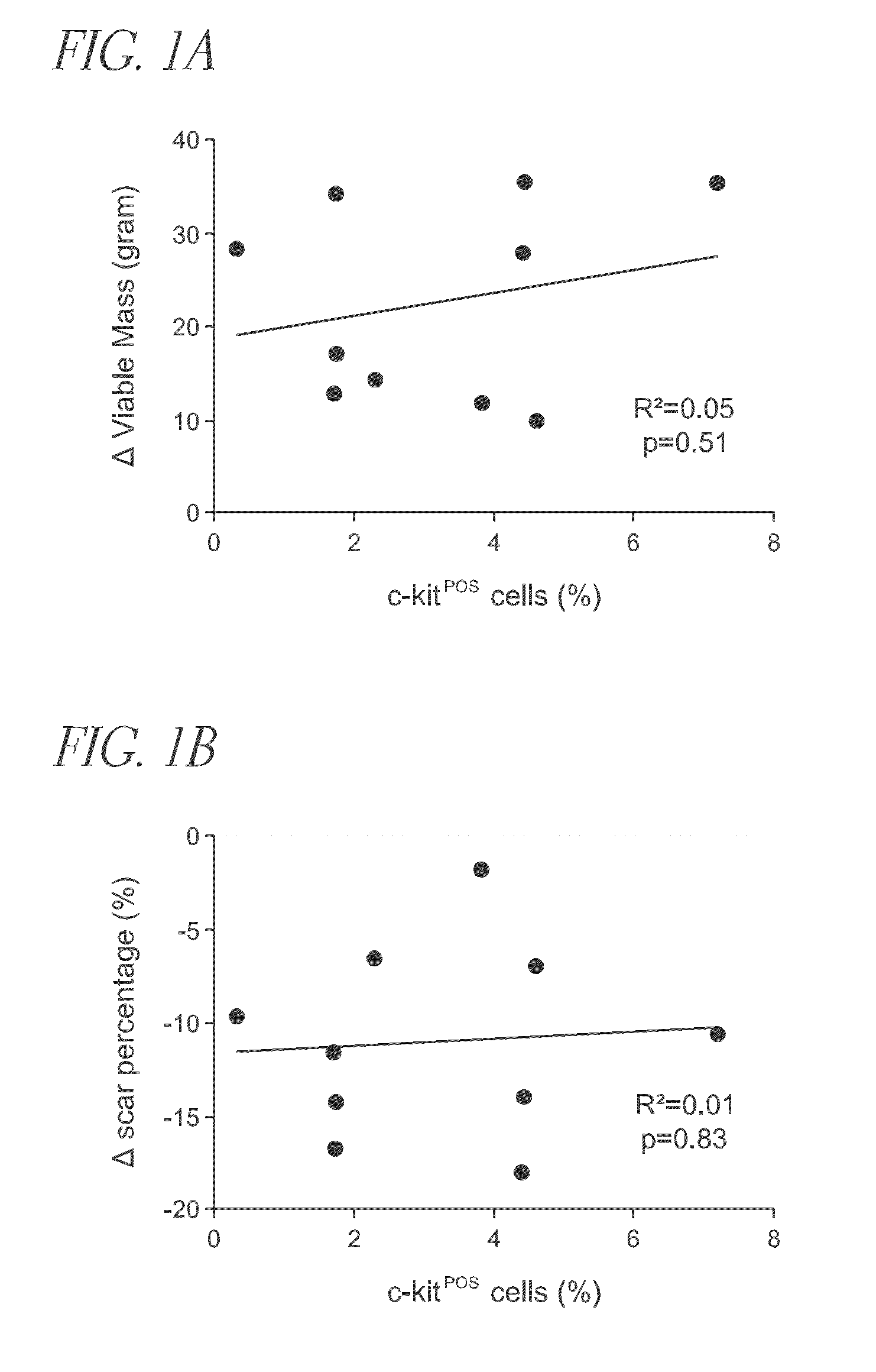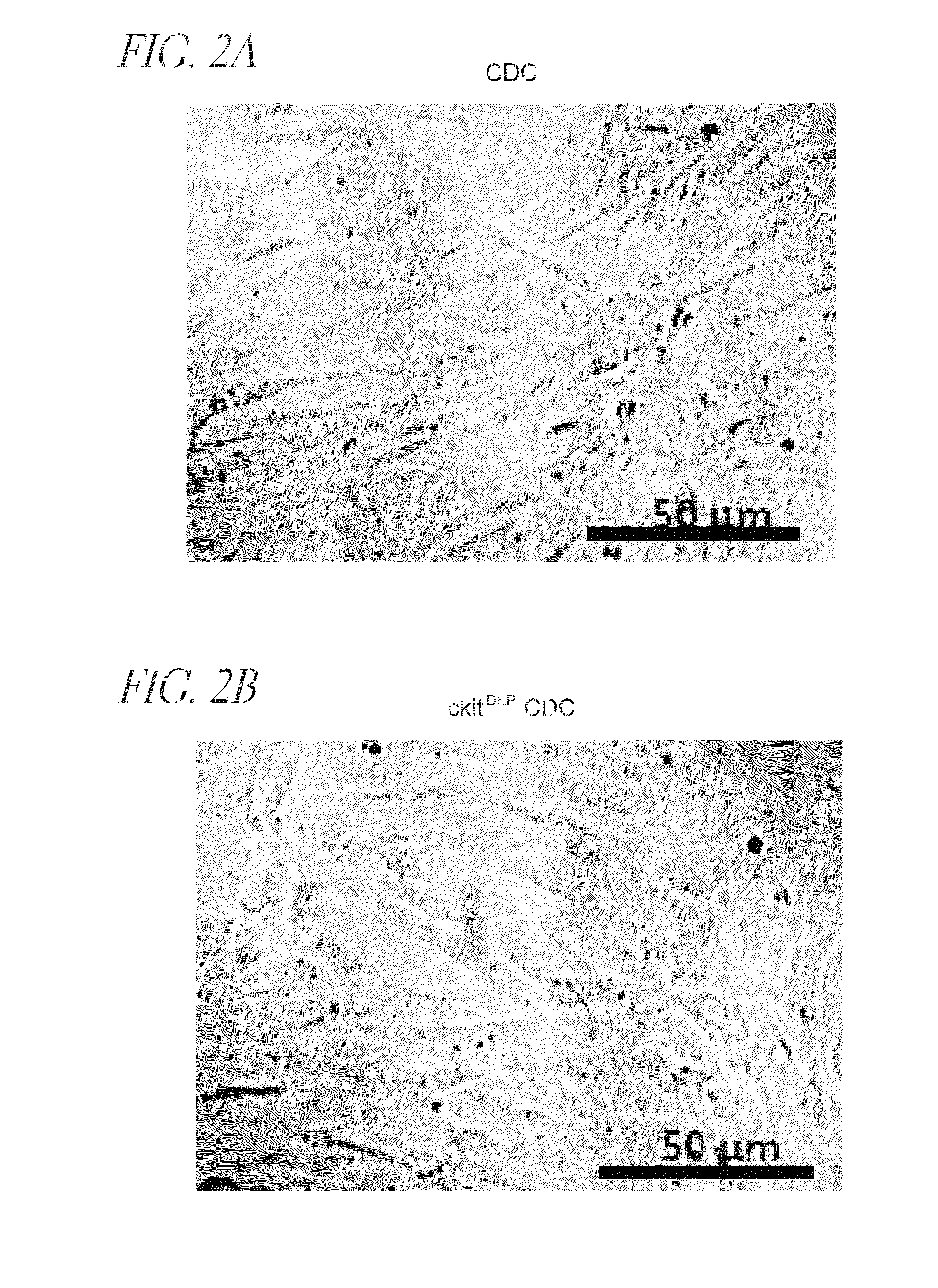Therapeutic cells depleted of specific subpopulations of cells for use in tissue repair or regeneration
- Summary
- Abstract
- Description
- Claims
- Application Information
AI Technical Summary
Benefits of technology
Problems solved by technology
Method used
Image
Examples
example 1
Regenerative Potential of Cardiosphere-Derived Cells (CDCs) and c-KitDEP Cardiosphere-Derived Cells in an Animal Model
[0122]As discussed above, in several embodiments, cell populations generated from a tissue source may comprise a plurality of subpopulations. In several embodiments, specific depletion (partial or complete) of one or more such subpopulations results in one or more positive benefits, and in many cases, no reduction in efficacy. As an example, a retrospective analysis of data from human patients in the recently completed CADUCEUS clinical trial suggests that there is little correlation between the percentage of c-kitPOS cells in a population of administered CDCs and the eventual regenerative potency of a population of CDCs (at least as evaluated by scar percentage and mass of viable heart tissue) (FIGS. 1A-1B). In some cases, the presence of c-kitPOS cells in an administered population may lead to functional, anatomical, or other benefits to the recipient.
[0123]To furt...
example 2
Correlation of CD90 Expression and Scar Reduction Potency
[0130]Retrospective data analysis from the CADUCEUS trial indicates that a negative correlation exists between CD90 expression and scar reduction. In brief, the CADUCEUS trial involved harvesting of autologous heart cells from endomyocardial biopsy specimens which were then grown over a four-week period to a therapeutic dose. The trial population consisted of post-MI patients with left ventricular ejection fractions (LVEFs) between from 25% to 45% with subjects randomized 2:1 to receive CDC infusion compared to conventional medical therapy. Patients received either a CDC dose of 12.5 million cells or 25 million cells.
[0131]As discussed above, the depletion of c-kit-expressing CDCs from the harvested CDCs did not result in reduction in therapeutic efficacy (FIGS. 1A-1B). Furthermore, retrospective analysis of CADUCEUS data indicates a negative correlation between CD90 expression in the CDC population and scar percentage at 6 an...
example 3
Further Characterization of the Depletion of CDCs of Specific Subpopulations
[0133]As discussed above, in several embodiments, depletion of CDCs of specific subpopulations does not alter the therapeutic potency of the remaining CDCs. Additional studies were performed as described in more detail below, to further elucidate what characteristics of CDCs are associated with (or change as a result of depletion of) specific subpopulations of CDCs.
[0134]Expression of selected cell-surface markers was evaluated in seventeen individual CDC populations that were used clinically (in the CADUCEUS clinical trial). The average expression across all CDCs produced was also calculated. FIG. 13A depicts CD105 expression, which is above about 90% in all CDC populations. CD105 is an established endothelial cell marker. In contrast FIG. 13B depicts CD45 expression, which appears on less than about 5% of CDCs. CD45 is a tyrosine kinase that is expressed highly by hematopoietic cells. These data therefore ...
PUM
 Login to View More
Login to View More Abstract
Description
Claims
Application Information
 Login to View More
Login to View More - R&D
- Intellectual Property
- Life Sciences
- Materials
- Tech Scout
- Unparalleled Data Quality
- Higher Quality Content
- 60% Fewer Hallucinations
Browse by: Latest US Patents, China's latest patents, Technical Efficacy Thesaurus, Application Domain, Technology Topic, Popular Technical Reports.
© 2025 PatSnap. All rights reserved.Legal|Privacy policy|Modern Slavery Act Transparency Statement|Sitemap|About US| Contact US: help@patsnap.com



